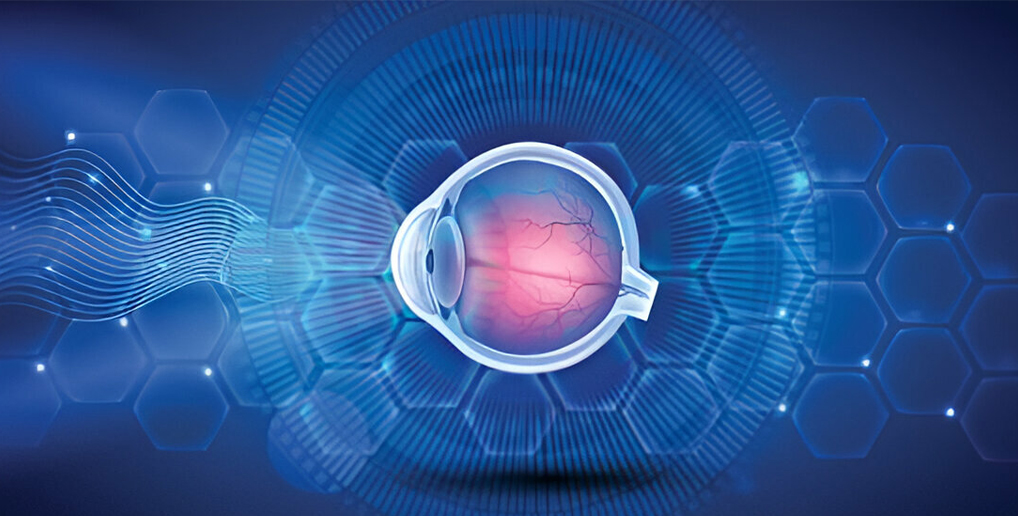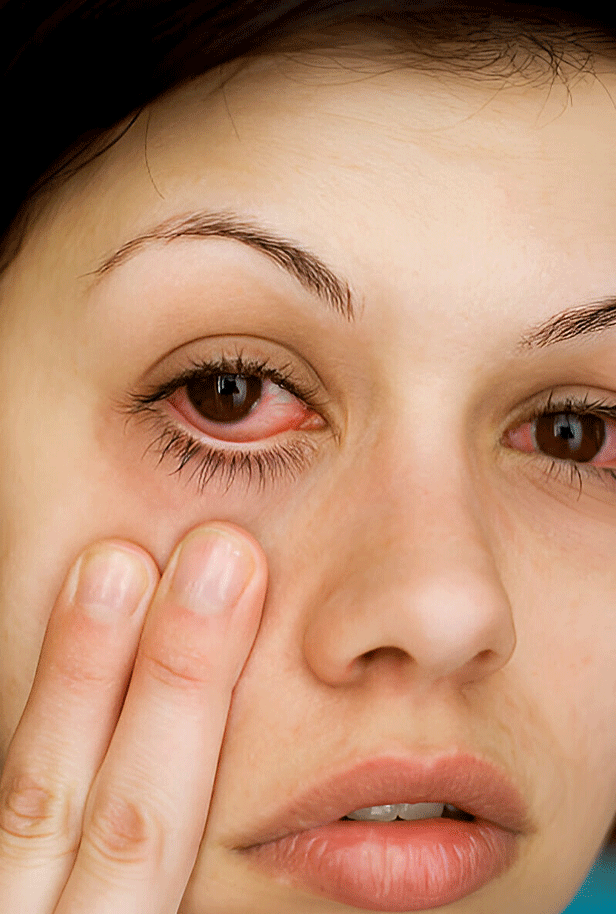
Get Stem Cell Treatment for Retinitis Pigmentosa in Delhi, India
Retinitis pigmentosa is an eye disorder which can cause vision loss and potential blindness. This condition will occur on retina’s photoreceptor cells and the symptoms can be visible in childhood or adolescence. But don’t worry about it, Global Stem Cell Care is now treated for retinitis pigmentosa with the help of an innovative approach which is known as retintis pigmentosa stem cell treatment in Delhi. It has the regenerative potential to restore the damaged retinal cells. By using this treatment option, you can witness many naked results such as reduction in symptoms, inflammation reduction, halting disease progression. With the help of professional researchers, we are willingly doing innovative research to improve the vision and the quality of life.
Symptoms of Retinitis Pigmentosa
RP symptoms typically occur between the ages of 10 and 30, but during infancy, certain persons experience symptoms. Depending on what portion of the retina is affected, symptoms differ. RP is a progressive disorder, but for any person, the rate at which vision deteriorates varies. Many individuals with the condition eventually have a very small range of vision.
In general, the rod cells of a human are first affected by RP. With peripheral (side) vision and seeing in low light or dark areas, rod cells help. “Night blindness,” which is impossible to see in low light, such as in a darkened space or outside at dusk, is also the first symptom. Naturally healthy eyes respond to dim light, but RP-affected eyes take even longer to do this or do not do at all.
The glare from sunshine or artificial lights even disturbs certain individuals.
Trouble with peripheral vision is also a typical early signs of RP. What you see on the edges, rather than directly ahead of you is peripheral vision.
The central cone cells are damaged first in certain individuals, and the condition is called cone-rod dystrophy (CRD) rather than RP. Central cone cells assist with central vision, which is required to easily see other fine details for detailed activities such as reading, writing, driving, discriminating colors.
Do you Know about Retinitis Pigmentosa?
Retinitis pigmentosa (RP) is an eye genetic disorder which causes vision loss. Symptoms include night vision problems and reduced peripheral vision (side vision). When peripheral vision worsens, “tunnel vision” can be encountered by individuals. It is unlikely to have full blindness. The onset of symptoms is normally progressive and sometimes in infancy.
Generally, Retinitis pigmentosa is inherited from the parents of a person. It includes mutations in one of more than 50 genes. The fundamental cause requires the gradual depletion in the back of the eye of rod photo receptor cells. In addition, this is accompanied by the depletion of photo receptor cone cells. Diagnosis is by an inspection that detects black pigment crystals in the eye.
For gradual worsening, vitamin A palmitate supplements may be beneficial. In some persons with serious illnesses, visual prosthesis can be an alternative. It is estimated that it affects 1 in 4,000 persons.
An electroretinogram, optical field testing, or genetic testing can be other supportive tests.
At present, there is no treatment for retinitis pigmentosa. The use of low vision aids, adjustable lighting, or orientation and mobility therapy can be used in attempts to handle the condition.
Global Stem Cell Care provides the best stem cell treatment for retintis pigmentosa in India, to the patients, who are suffering from this condition, and through the stem cell treatment, their symptoms have also improved. Only stem cell therapy for retintis pigmentosa in Delhi is the cure for this condition as it helps to replace the damaged cells. Global Stem Cell Care has the best team that works for the effective stem cell treatment for retintis pigmentosa in India.
Retinitis pigmentosa (RP) is an eye genetic disorder which causes vision loss. Symptoms include night vision problems and reduced peripheral vision (side vision). When peripheral vision worsens, “tunnel vision” can be encountered by individuals. It is unlikely to have full blindness. The onset of symptoms is normally progressive and sometimes in infancy.
Generally, Retinitis pigmentosa is inherited from the parents of a person. It includes mutations in one of more than 50 genes. The fundamental cause requires the gradual depletion in the back of the eye of rod photo receptor cells. In addition, this is accompanied by the depletion of photo receptor cone cells. Diagnosis is by an inspection that detects black pigment crystals in the eye.
An electroretinogram, optical field testing, or genetic testing can be other supportive tests.
At present, there is no treatment for retinitis pigmentosa. The use of low vision aids, adjustable lighting, or orientation and mobility therapy can be used in attempts to handle the condition.
For gradual worsening, vitamin A palmitate supplements may be beneficial. In some persons with serious illnesses, visual prosthesis can be an alternative. It is estimated that it affects 1 in 4,000 persons.
Global Stem Cell Care provides the best stem cell treatment for retintis pigmentosa in India, to the patients, who are suffering from this condition, and through the stem cell treatment, their symptoms have also improved. Only stem cell treatment is the cure for this condition as it helps to replace the damaged cells. Global Stem Cell Care has the best team that works for the effective treatment of this medical condition.
Symptoms of Retinitis Pigmentosa
Retinitis pigmentosa is one of those eye disorders that can make your vision blurry or fully blind if not get treated on time. That’s why knowing its early symptoms is necessary to slow down its progress on its initial stage. RP symptoms vary widely among individuals. While some people retain partial vision into older age, others may lose most of their sight earlier.
Patients who are suffering from this type of eye disorder can experience various symptoms. One of the main symptoms of this disease is difficulty in seeing in low light or in darkness which is also known as night blindness. Individuals with RP experience problems adjusting their vision in dark environments which cause many accidents.
Another common symptom of this disorder is loss of peripheral vision also referred to as “tunnel vision”. In this symptom, you can find difficulty to see objects while looking straight ahead.
Some other symptoms includes:
- People with RP may experience blurred or distorted central vision.
- As the condition progresses, central vision may also become unclear or distorted.
- Increased sensitivity to bright light, which can cause discomfort or difficulty seeing.
- Reduced ability to distinguish certain colors, especially in dim light.
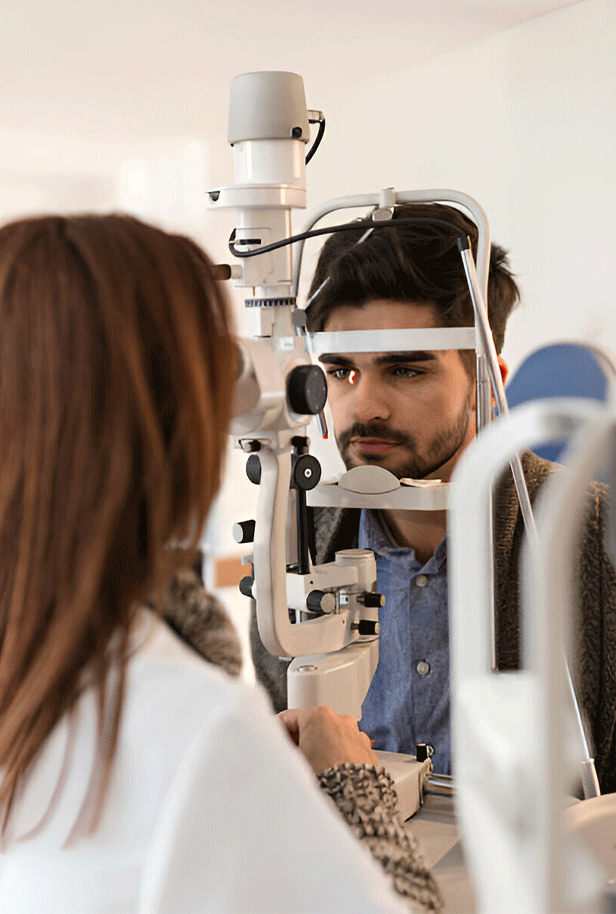
Diagnosis of Retinitis Pigmentosa
A series of tests are available to confirm a diagnosis of RP. These include:
- Dilated Eye Check – You are given special eye drops to dilate your eyes during a dilated eye test, enabling the ophthalmologist to better see the retina at the back of your eye. Drops make you momentarily susceptible to light and make your eyes blur.
- Retinal Photograph – You should use a special camera to take pictures of your retina, which helps to chart your RP progression. For a sensor called an OCT (optical coherence tomography) that uses dim red light, this can involve photographs of the retinal thickness.
- Fluorescein Angiography – In order to gain more accurate photographs of the retina, a procedure called fluorescein angiography may also be recommended.
- Visual Field Test – To assess if the peripheral vision has been impaired, a visual field examination is used.
- Electro-diagnostic tests – To investigate how the retina functions, electro-diagnostic tests such as electroretinogram (ERG), electro-oculogram (EOG) and multifocal electroretinogram (mfERG) may be recommended.
Under varying lighting conditions, the electrical activity of your retina is measured to assess which portion of your retina is not working normally. Most of these measures involve dilation of the eyes (as above) and also use a hard contact lens on each eye to assess the responses of the eye to various forms. Stem Cell therapy for Retinitis Pigmentosa in India by Global Stem Cell Care is the best-in-class.
Types
Usher Syndrome
- Vision loss
- Hearing loss
- Balance problems
Leber’s Congenital Amaurosis (LCA)
- Corneal abnormality
- Aversion to light
- Hearing impairment
- Development delays
- Motor skill impairment
- LCA patients habitually press their eyes with fists and fingers
Bardet-Biedl Syndrome
- Obesity
- Kidney issues
- Genital and hormonal issues
- Visual impairment
- Extra fingers or toes
- Learning disabilities
Rod-Cone Disease
- gradual loss of night vision
- gradual loss of peripheral vision
- sensitivity to bright light
- vision is best at dusk
- errors in color vision in both red-green and blue-yellow ranges
RP doesn’t have a clear cause yet, but it results from mutations or differences in genes that affect the photoreceptor cells in your retina. These cells allow you to perceive colors and adjust to dim lighting conditions.
RP damages these cells, making it harder for you to see throughout your life. But researchers and doctors aren’t sure exactly what triggers these changes in your genes.
The retinitis pigmentosa can also result from:
- Medications: The medications called phosphodiesterase type 5 inhibitors, such as sildenafil (Viagra), may link to worsening conditions like RP in people who may have gene mutations that increase their risk of developing RP.
- Infections: RP involves an RPGR gene mutation. An upper respiratory tract infection, such as chronic sinusitis, can trigger the gene, resulting in RP symptoms.
- Injuries to the eye: Injuries to the eye can result in long-term retina damage, potentially resulting in the onset of RP symptoms.
- Other genetic conditions: Usher syndrome is another genetic condition commonly associated with RP and other symptoms like deafness or difficulty staying balanced while walking.
Gene Therapy
Retinitis Pigmentosa is a neurodegenerative disease of the retina that leads to blindness due to the loss of the light-sensing rod and cone photoreceptors. Gene Therapy is a new therapeutic modality that has been found to be highly beneficial and is being used to treat many diseases by replacing the infected genes of the disease. One of the significant benefits of gene therapy is that removing problematic genes from the body of future parents also removes any chances of their future baby being afflicted by the same condition.
Nerve Growth Factor Treatment
Nerve growth factor (NGF) is a member of the neurotrophic factor family, which can inhibit the death of nerve cells and has several features of typical neurotransmitter molecules. NGF plays an imperative role in the development and growth of nerve cells. NGF is synthesized and secreted by tissues. It can be up-taken by sympathetic or sensory nerve endings and then conveyed to be stored in neuronal cell bodies, encouraging the growth and differentiation of nerve cells. NGF can exert neurotrophic effects on injured nerves and promote neurogenesis that is closely related to the development and functional maintenance and darning of the central nervous system.
Manjuwara Ahmed From Dubai Visited India For Stem Cell Treatment
Hi, I am Manjuwara from Dubai. I visited India for stem cell treatment. I have retinitis pigmentosa, a degenerative eye disease that destroys the light-sensitive cells in the retina. It is progressive, degenerative, and incurable. I was told that I would eventually go blind. Well, I started stem cell treatment, and what was once a blurry world is now sharp and clear. I am grateful to the stem cell treatment and the fantastic Global Stem Cell Care team who have made this possible.
Yuvraj Jha From Mumbai Came To Us For The Treatment Of Retinitis Pigmentosa
When I was 19 years old, I was diagnosed with Retinitis Pigmentosa. And after being unable to walk without restrictions and without bashing on objects, my parents decided to receive stem cell treatment for my condition at the facilities. They came in touch with Global Stem Cell Care. After the sessions of stem cell treatment, I now feel the improvements. Before visiting the hospital, my vision was distorted. My condition is a lot better now after the treatment. We are very much thankful to the team of Global Stem Cell Care.
Emily Green’s Success Story Of Retinitis Pigmentosa Treatment
I was diagnosed with Retinitis Pigmentosa and knew that stem cell is a viable treatment, but they were too expensive in my country. Thanks to Global Stem Cell Care’s affordable and international quality treatment. However, within just 3 months after my treatment, I regained some surprising results. I think it worked for me. Thanks to the whole team for supporting me throughout the treatment. I’m seeing the world in a whole new light. I’ve never felt more hopeful.
Derby Morgan Came To India To Get Treatment For Retinitis Pigmentosa
I underwent stem cell treatment for Retinitis Pigmentosa via Global Stem Cell. After the treatment, I started to see positive changes within just a few weeks after my procedure. Although, you don’t have to worry about side effects or pain as it’s a minimally-invasive procedure with no side effects. I consider this procedure a success and would recommend the same to others seeking a safe and effective process.
Related Disorders for Stem Cell Treatment
optic nerve damage stem cell treatment
stem cell therapy age related macular degeneration
is there a cure for optic nerve hypoplasia
optic neuropathy stem cell treatment
eye best’s disease treatment with stem cells
stem cell therapy for retinopathy
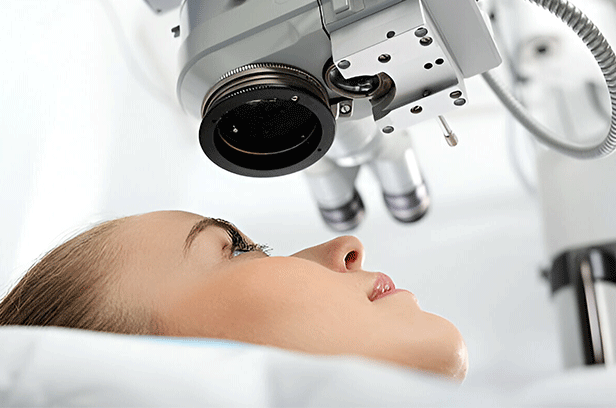
Implantation
- Global Stem Cell Care has the best stem cell therapy for Retinitis Pigmentosa in India. The implantation stage is very important and an ideal pick during the treatment.
- The stem cells that are used in the implantation stage are the autologous mesenchymal foundational microorganisms from bone marrow.
- From a large portion of the bone marrow, undeveloped cells are isolated by an uncommon machine and infused by intra-thecal infusion; the staying bone marrow is sent to a research center for intensification of cells and giving cytoplasmic markers for making neuro ancestor cells. These ancestor cells are infused by intravenous dribble.
The following is the structure that is followed during the implantation stage:
- Intravenous administration
- Liberation angioplasty
- Intrathecal (lumber puncture)
- Intraarterial
- Subcutaneous
- Surgical administration for stroke
- Intramuscular
MECHANISM
The following is the potential mode of action for restoring retinal cells. Stem cells secrete neurotrophic factors, such as BDNF, GDNF, which can facilitate neural and retinal ganglion cell differentiation of grafted cells, prevent apoptosis, enhance angiogenesis, reduce inflammatory stimuli, and promote survival of grafted cells.
Stem cells facilitate the division of cells and have an early response to damage, ischemia and degeneration. Mesenchymal stem cells also have paracrine effects that improve angiogenesis, decrease inflammation, have anti-apoptotic and chemotactic signalling effects, encourage beneficial extracellular matrix remodelling, promote the activation of resident adjacent stem cells, and restore the retinal pigment epithelium.
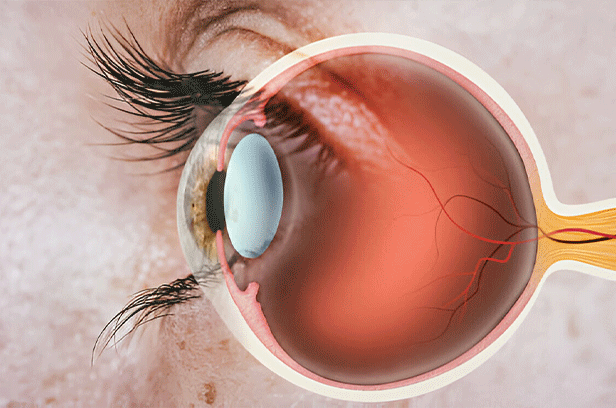

MECHANISM
The following is the potential mode of action for restoring retinal cells. Stem cells secrete neurotrophic factors, such as BDNF, GDNF, which can facilitate neural and retinal ganglion cell differentiation of grafted cells, prevent apoptosis, enhance angiogenesis, reduce inflammatory stimuli, and promote survival of grafted cells.
Stem cells facilitate the division of cells and have an early response to damage, ischemia and degeneration. Mesenchymal stem cells also have paracrine effects that improve angiogenesis, decrease inflammation, have anti-apoptotic and chemotactic signalling effects, encourage beneficial extracellular matrix remodelling, promote the activation of resident adjacent stem cells, and restore the retinal pigment epithelium.
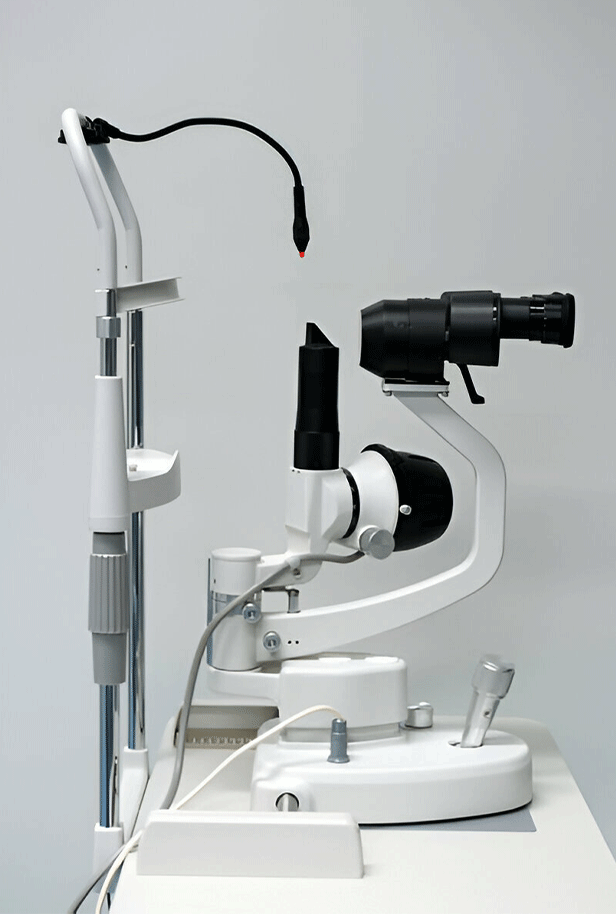
Get Stem Cell Therapy for Retinitis Pigmentosa in Delhi
There is immense promise in the field of retintis pigmentosa stem cell treatment in Delhi.
Stem cells such as Umbilical Cord Blood-Derived Stem Cells (UCB-SC), Umbilical Cord Mesenchymal Stem Cells (Ucmsc) and Bone Marrow-Derived Mesenchymal Stem Cells (Bm-Msc) have the potential to regenerate and enhance vision from lost photo receptors and retinal neurons. Some studies indicate that stem cells. Through stem cell therapy for retintis pigmentosa in Delhi, there is the regeneration of nerve tissues, blood supply improvements, and reduction in inflammation. Global Stem Cell Care offers the best stem cell treatment for Retinitis Pigmentosa in India that helps improve the condition.
HOW GLOBAL STEM CELL CARE THERAPY WORKS?
In an ongoing Phase I/II clinical trial at the University of California, Irvine, an experimental stem cell-derived therapy intended to maintain and eventually restore vision in people with retinitis pigmentosa (RP) has shown a favorable safety profile.
This safety update is positive news and a significant move in the right direction provided that this research is one of the first-ever stem-cell-derived therapies for RP.
We are the best stem cell center for retintis pigmentosa who look forward to further findings from this research as the trial progresses. The treatment requires the infusion of retinal progenitors into the vitreous, gel-like fluid in the center of the eye, the stem cells that are in the process of being retinal cells.
Researchers think that the cells will produce proteins that will maintain the current photoreceptors of the patient intact, avoid their degeneration and retain vision.
In an ongoing Phase I/II clinical trial at the University of California, Irvine, an experimental stem cell-derived therapy intended to maintain and eventually restore vision in people with retinitis pigmentosa (RP) has shown a favorable safety profile.
This safety update is positive news and a significant move in the right direction provided that this research is one of the first-ever stem-cell-derived therapies for RP.
In the coming years, we at the Foundation look forward to further findings from this research as the trial progresses.
The treatment requires the infusion of retinal progenitors into the vitreous, gel-like fluid in the center of the eye, the stem cells that are in the process of being retinal cells.
Researchers think that the cells will produce proteins that will maintain the current photoreceptors of the patient intact, avoid their degeneration and retain vision.
VIP TREATMENT TO PATIENTS AT GLOBAL STEM CELL CARE
The therapy sessions given to the patients at Global Stem Cell Care occur in the VIP treatment room in the advanced clinic.
24*7 supervision is maintained on the patients by the efficient medical team.
Global Stem Cell Care highly recommends the patients stay for a minimum of 3 days in Hospital.

GLOBAL STEM CELL CARE TREATMENT PROCEDURE
The treatments that take place in Global Stem Cell Care in Delhi, India usually last for about 3 days. The treatment protocol is safe and non-invasive. The patients can travel the next day. The following is the day-wise schedule for the patients.
- Pick up from the Airport to the Hospital
- Interaction between Dr and Patient, to clear all their doubts at that time
- Admission procedure
- Clinical examination & Lab test will be done prescribed by the doctor
- Supportive Therapy
- Stem cell Procedure
- Supportive therapies
- Physiotherapy
- Supportive Therapy
- Physiotherapy
- Discharging formalities
- Drop back to the Airport
- For Admission, carry the identity card (Passport/ Pan Card / Driving License)
- Carry the hard copy of Patient reports
Our Promise
We promise to our patients that we provide them the best stem cell therapy for retinitis pigmentosa. Our aim is to restore vision and improve the quality of life of those who are suffering from this condition. Our researchers and team of experts are doing rigorous research to harness the regenerative capabilities of stem cells to address the root causes of retinitis pigmentosa. With the help of this treatment, we not only manage the symptoms but also reverse its progression. You can trust us for your retinitis pigmentosa because we don’t look down on any patient’s condition.


Cost
Retinitis pigmentosa is a dangerous eye condition which can cause vision loss and make you potentially blind. By the rise of an innovative therapy called stem cell therapy, you can reduce the symptoms. But the cost of this innovative approach can be expensive. At Global Stem Cell Care, the cost can be dependent on various factors such as the type of stem cells you want, severity of the condition, stage of your condition, and many other factors. On the other side, there is an additional cost which may affect the cost fluctuation which include initial consultation, follow-up care, transportation, etc. If you are looking for the results, you can see there is no cost that can be more expensive than your life’s cost. But the best stem cell center for retintis pigmentosa are doing serious research on this therapy to make it affordable and effective for everyone.
Success Rate
With the help of stem cell therapy, you can experience positive results. But the success rate can vary on different factors such as disease severity, age of patient, stage of its condition, and many more. Clinical trials at Global Stem Cell Care have shown remarkable results in which many patients are experiencing improvement in vision. But the result is not the same for all because research of stem cells is still undergoing. Global Stem Cell Care employs advanced techniques and personalised approaches to maximise success rates, offering hope for improved vision and quality of life for RP patients worldwide.


Advantages
Retinitis pigmentosa is a degenerative eye disorder which can affect your retina and make you blind. Traditional treatment may provide you limited effectiveness in reducing the progression. But stem cell therapy is becoming the new hope for treating retinitis pigmentosa. With the help of its regenerative potential, it will provide you different benefit which includes:
- Regeneration of Retinal Cells: Stem cell therapy focuses on restoring the lost vision and stopping progression by replacing damaged retinal cells with the healthy ones.
- Personalised Treatment: Global Stem Cell Care provides the personalised treatment options for different individuals to reach their specific needs.
- Minimally Invasive Procedure: Stem cell treatment we offer to the patients are minimally invasive which reduces risks and recovery times for patients.
- Reduced Reliance on External Devices: Conventional treatment can rely on assistive devices but on the other hand stem cell therapy focuses on restoring the natural vision which reduces dependence in external aids.
- Global Accessibility: Global Stem Cell Care provides access to cutting-edge stem cell treatments for RP patients worldwide, ensuring equitable distribution of this transformative therapy.
Quality Control
For the treatment of retinitis pigmentosa with the help of stem cell therapy, quality control measures are important in Global Stem Cell Care. To make sure that you get your natural vision and quality of life back, maintaining high quality standards matters:
- Source Verification: We do rigorous checks to ensure the quality of and purity of stem cells to meet the safety and efficacy standards.
- Cultivation Conditions: Precise environmental controls are maintained during stem cell cultivation to optimise their growth and functionality.
- Sterility Assurance: Stringent sterilisation protocols are implemented to prevent contamination and uphold patient safety.
- Genetic Screening: Comprehensive genetic screening is performed to mitigate the risk of adverse reactions and ensure compatibility.
- Treatment Protocol Compliance: Adherence to established treatment protocols guarantees consistency and efficacy in patient outcomes.
- Continuous Monitoring: Ongoing monitoring and evaluation post-treatment enable timely adjustments and ensure sustained therapeutic effects.
Quality Certificate
Global Stem Cell Care proudly certifies the quality of its treatment for retinitis pigmentosa utilising cutting-edge stem cell therapy. Our meticulous protocols ensure the highest standards in patient care and outcomes. Rigorous screening and selection of stem cells, coupled with advanced techniques, guarantee safety and efficacy. Each step is overseen by expert clinicians and researchers committed to excellence. We adhere to stringent international guidelines, fostering trust and confidence in our procedures. Our dedication to continuous improvement and innovation drives us to deliver the best possible results for patients battling retinitis pigmentosa. Trust Global Stem Cell Care for unparalleled quality in stem cell treatment.

What to Expect from Stem Cell Treatment for Retinitis Pigmentosa?
The stem cell therapy for Retinitis Pigmentosa requires the infusion of retinal progenitors into the vitreous, gel-like fluid in the center of the eye, the stem cells that are in the process of being retinal cells.
Researchers think that the cells will produce proteins that will maintain the current photoreceptors of the patient intact, avoid their degeneration and retain vision. Investigators also suspect that the proteins
could rescue cones that have stopped light production, but have not fully degenerated. Cones are the photoreceptors that are appointed the task to extend the ability to read, recognize faces, and see in lighted conditions. After the stem cell therapy for retintis pigmentosa by Global Stem Cell Care, the patient experiences better vision
![]() Visual acuity
Visual acuity
![]() Experience of light
Experience of light
![]() Vision field
Vision field
![]() View at night
View at night
![]() View in colour
View in colour
![]() Nystagmus
Nystagmus
Possible Improvement
Using umbilical cord derived adult stem cells, most patients with Retinal Dystrophies and associated retinal disorders whose Special Access has helped undergo groundbreaking therapies have demonstrated substantial changes, including enhanced visual acuity, improved visual field, improved light sensitivity and night vision.
In comparison, the development of the condition following stem cell therapy has been considerably slower, resulting in years of retained vision.
Retinitis Pigmentosa Stem cell-treated patients typically find changes in the following areas:
Through stem cell treatment for glaucoma in India by Global Stem Cell Care, improvements can be seen in the symptoms of the patients. After the stem cell treatment, major improvements can be seen in the patients.
FOLLOW UP
The follow up is the most important stage through which the doctors make the assessment of the condition of the patient. Without the follow-up, the treatment of Cerebral Palsy cannot be completed. According to the doctor’s recommendation, the patient has to come to visit.
FREQUENTLY ASKED QUESTIONS
Q. What is Retinitis Pigmentosa (RP)?
A.Retinitis Pigmentosa is a genetic condition that results in a progressive deterioration of sight, allowing night vision and peripheral vision to deteriorate. Owing to progressive disruption to the retina-photosensitive cells-of the skin, retinitis Pigmentosa occurs. It starts with damage to the cells of the rod, cells responsible for vision in darkness, and then damage to cone cells, cells responsible for color vision and acuity.
Q. What causes you to get Retinitis Pigmentosa (RP)?
A. Retinitis Pigmentosa is attributed to a genetic disorder and is a hereditary condition that arises in one or more than 50 genes due to gene mutation. However while external factors can decide and influence the rate of disease progression, they do NOT cause it. According to study, numerous types of gene mutations cause the photoreceptor cells of the eye to fail, which in turn contributes to the gradual degradation of the retinal cells.
Q. Can Retinitis Pigmentosa be passed down through heredity?
A.Yes, it is possible to spread Retinitis Pigmentosa from parents to their offspring. If either parent has a dominant gene for this disorder, they have a 1 in 2 chance of passing it on to their infant, while if the recessive gene for RP is borne by both parents, they have a 1 in 4 chance of passing it on to their offspring.
Q. What are the symptoms of Retinitis Pigmentosa (RP)?
A. In an infant as young as 10 years of age, the symptoms of Retinitis Pigmentosa may be established, and while the pattern and gradual severity of this condition vary between persons, it normally presents in the form of the following symptoms:
1: Decreased visibility at night
2: Vision blurred and smudged
3: Unclear Differentiating Colour
4: View of the Tunnel
5: Photophobia (greater visual aversion and discomfort/pain endured when exposed to bright lights)
Q. How does Retinitis Pigmentosa affect vision?
Useful Tags
Stem Cell Treatment for Retinitis Pigmentosa, Stem Cell Therapy for Retinitis Pigmentosa in India, Stem Cell Therapy for Retinitis Pigmentosa Cost in India, Affordable Stem Cell Therapy for Retinitis Pigmentosa in India, Low Cost Stem Cell Therapy for Retinitis Pigmentosa in India, Price of Stem Cell Therapy for Retinitis Pigmentosa in India, stem cell treatment for Retinitis Pigmentosa in Delhi, stem cell treatment for Retinitis Pigmentosa in India, stem cell Hospital for Retinitis Pigmentosa in Delhi, stem cell Hospital for Retinitis Pigmentosa in India
